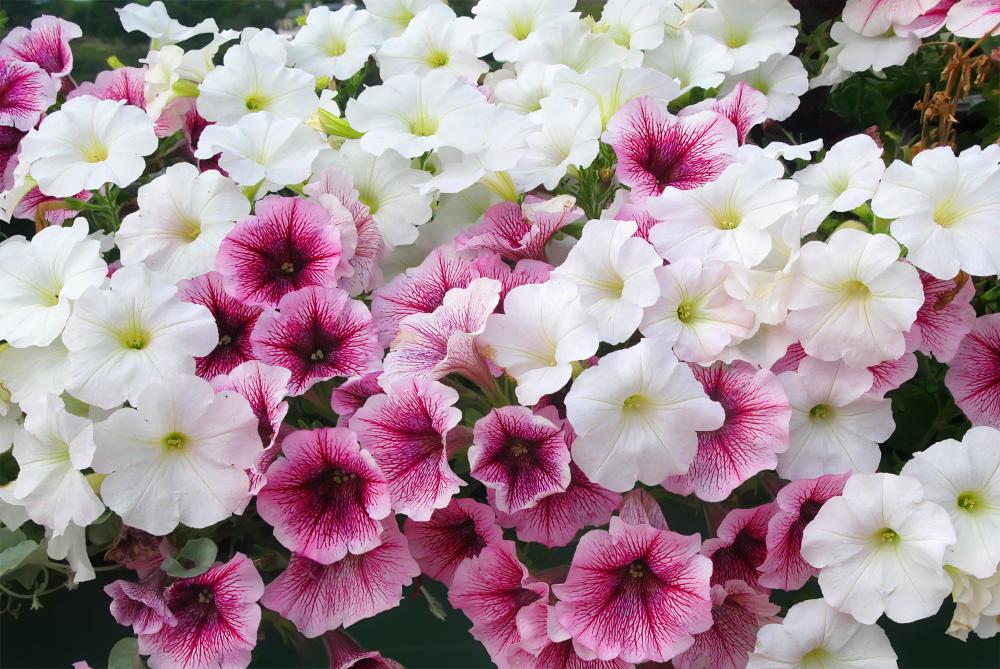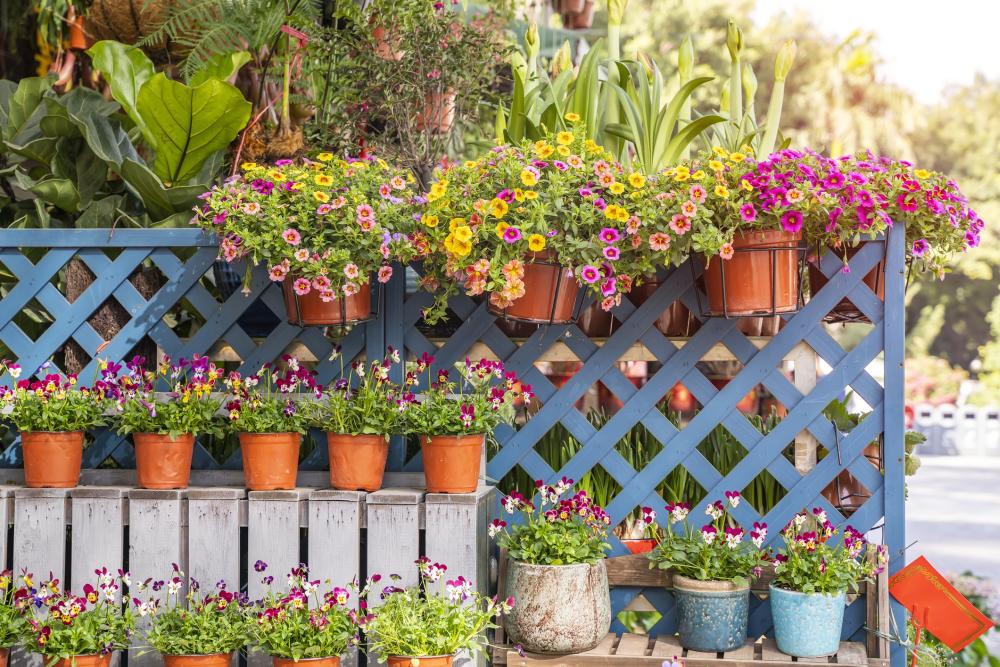Petunia Growing Problems And Ways To Fix Them
One of the most appealing features about growing petunias at home is that they come in different color combinations. There are red petunias, blue cultivars, white varieties, and combinations of all of the above. You will have a great time growing different petunia varieties and creating color schemes that match your setting or take it in a totally unexpected different direction.
But it’s not smooth sailing when it comes to petunias. Petunia growing problems are often a snag in an otherwise delightful experience. Sometimes the petunias won’t bloom, or they might get leggy. The winters in your zone might prove to be too much for these delicate perennials or they would grow out of shape and demand regular pruning. All of these and more are common petunia growing problems that you have to deal with. Read on to find out how to fix these problems and keep your petunias growing as beautiful as you’d like them.
Petunia Not Blooming
Without flowers, petunias are just another green plant with nothing to offer but some lackluster leaves. The blooms are the main reason you’d want to grow this perennial in your garden or as a houseplant. But sometimes the flower buds fail to grow. It’s already late spring, the foliage is fully developed, but not a single bloom has revealed itself. Now, you start to worry, and for a good reason.
Once summer picks up and the petunia refuses to bloom, you’ll know that something is wrong with the plant. But actually, there’s nothing wrong with the plant. It’s the growing conditions which are holding it down. Luckily, these problems are easily fixed and although you would certainly miss the blooms this season, by next spring the petunia will have flowers blooming again.
How to Fix It
The two main reasons that your petunias are not blooming have to do with inadequate light and using the wrong fertilizer. Although watering and soil quality can also play a part in the health and growth of the plant, they usually have less impact on the flowering habits of the petunia. When your petunia misses the bloom season you can do the following to fix the issue.
- Full Sun: Petunias need full sun to bloom. This is why these perennials are more suitable for outdoor growing than indoors. But even in the garden, the petunia might be growing in partial shade or some other plant might be keeping it in perpetual darkness. Make sure that the petunia is getting at least 8 hours of sun during the spring and summer. If you grow it as a houseplant, place it on a window sill facing either the west or south.
- Feeding: If you have been feeding the petunia with a balanced or nitrogen-high fertilizer, that could be the reason for the absence of blooms. Nitrogen triggers a robust growth of foliage and roots but at the cost of the blooms. In the spring switch to liquid fertilizers that are high in phosphorus. Apply the mild fertilizer once every couple of weeks from mid-spring until mid-summer. If you prefer organic fertilizers, then the bone meal is a good alternative since it’s rich in phosphorus.
- Deadheading: Leaving the blooms on the petunia plant will encourage the plant to focus on developing seeds. So you should deadhead the flowers to trigger more abundant blooms.
Petunias Are Getting Leggy
Although the blooms of the petunia are its pride and joy, the perennial plant can sometimes grow lanky stems where the flowers dangle from the end. Needless to say, this is not what you had in mind when you first introduced these plants to your garden. Not only are the leggy petunias a sore sight in your meticulous garden, but the long stem might snap under the weight of the flowers as well. So you’ll end up with plenty of fallen blooms dead before their time.
And it’s not like the plants will fix themselves with time. Every year, the stems grow longer and lankier giving the plant an unpleasant bare look. Something has to be done and it’s up to you to fix this leggy petunia problem.
How to Fix It
As usual, it’s something to do with the petunia care that causes the perennial plant to become leggy. Here’s how to deal with this problem and the various causes behind it.
- The first thing that comes to mind is watering. Since the plants prefer the soil to be moist but not wet, underwatering can play havoc with the plant’s stems. Fewer leaves grow to cover the stems and the blooms hang from the end of the bending stem.
- Always check the soil with your finger and make sure it’s moist. For petunias growing in pots, you need to water them more regularly than those growing in the garden.
- Another reason the plant might get leggy is when the flowers are left on the petunia until seeds develop. So deadheading the blooms and preventing seeding is a good way to keep the plant in good shape.
- Pruning the petunia plant to promote a fuller shape and trigger more lateral growth can also prevent the plant from getting leggy.
Overwintering Petunias
Although petunias are easy to care for, they sometimes struggle to survive a specially cold winter. They don’t do well with frost either. So leaving them outside during the winter can prove to be a fatal decision. If you expect harsh weather conditions, you need to plant your petunias in containers and bring them inside for protection during the winter months.
But shielding them from the elements is not enough to get the petunias through the winter and ensure they grow blooms in the next spring. You also need to prepare the plants for the dormant months.
How to Fix It
Even if you planted the petunias in the garden as an oversight, you can still save them from the severe winter conditions. Here are a few ways to overwinter your petunias.
- Once the last bloom has faded or cut and the leaves turned yellow and dropped, it’s time to prepare the petunia for the coming winter.
- If the plant is growing in the garden, cut it back to about 2 inches removing all but the leader branch.
- Dig up the plant from the soil and plant the stub into a small pot making sure the roots are at the same level under the soil as they were in the garden.
- Water the pots until water flows out of the drainage holes then keep them in a cool and shielded place.
- Don’t feed the dormant petunias since that could trigger new growths in the middle of winter which would not survive.
- Water the plants once every 3 weeks and only when the soil is dry.
- Another way to winter the petunia is to cut a short stem, keep it in a glass of water until roots develop, then plant it in a small pot filled with potting mix. In the spring, you can take it outdoors to harden it.
Pruning Petunias
If you’ve been keeping track, you might notice that pruning came up as a solution to two out of the three petunia growing problems we have discussed so far. Whether you’re overwintering your petunia or trying to keep it from getting leggy as the years go by, pruning is more than a casual undertaking to keep the plant trim and in good shape.
In fact, this act of cutting back the petunia can help it survive during dormancy and bring it back to life with a fuller structure and more blooms. And as you can expect, pruning petunias is more than taking the pruning shears to the slender stems and cutting haphazardly. Even if your goal is to cut back the plant, there should always be a method to one’s madness.
How to Fix It
As with most perennials, the earlier you start your pruning, the better shape the plant gets throughout the years. And since getting leggy is a recurring problem for petunias, you should consider pruning part and parcel of growing and caring for these lovely plants.
- Pruning petunias is an ongoing task that you need to perform once every couple of weeks during the growing season.
- Trim off wayward stems and those that either interlace with other stems or ruin the overall structure of the plant.
- Remove damaged stems regularly.
- Cut stems that grow over 8 inches long. This will keep your plant compact and encourage bushy growth.
- Always cut the stems above the node to trigger new growth without leaving a dead tip hanging in the plant.
- The more you prune the petunia, the more blooms you’ll get on the new stems.
Deadheading Petunias
Much like roses, petunias need deadheading too. The goal is always to prevent the plant from going to seed which can cause a lot of problems. For one thing, the plant will stop growing new blooms and focus its energy on the costly process of developing seeds. Another side effect of blooms reaching the end of their life cycle is that petunia becomes leggy and the stems carrying the blooms get longer with fewer leaves covering them.
Deadheading petunias keeps the plants looking young and healthy. It encourages more blooms to grow and maintains the compact size of the plant. It’s a process that forces the petunia to start from scratch. It develops buds instead of growing lanky stems. So how would you go about deadheading petunias and enjoying their delightful blooms every spring?
How to Fix It
The idea of deadheading petunias is to prevent the seed pods from forming. They take up a lot of resources and signal to the plant that it has fulfilled its mission and it can now rest and stop growing new blooms. And that’s the opposite of what you’d expect from a plant whose whole purpose of existence is to provide you with fresh and bright flowers all season. Here’s how to deadhead a petunia.
- If you don’t want to collect the flowers for your floral arrangement, you can leave them on the plant long enough for the petals to turn brown.
- Use a sterilized blade or pair of scissors to cut the flower and the stem below it until the first set of leaves.
- You can also snap the stems off with the flower at the top using your thumbnail.
- Water and fertilize the petunia after you remove the spent flowers to encourage new growth.
- Keep applying phosphorus-rich fertilizers such as bone meal during the flowering season to get larger and brighter blooms.
- Deadheading and pruning go hand in hand in making the plant bushier, healthier, and compact. Although pruning starts early when the stems reach 8 inches long, deadheading is an effective way in preventing common petunia growing problems such as legginess and lack of blooms.
Caring for petunias starts as soon as you bring the young plants from the nursery and plant them in the garden. Proper care and maintenance will go a long way in preventing many of the growing problems on this list.


